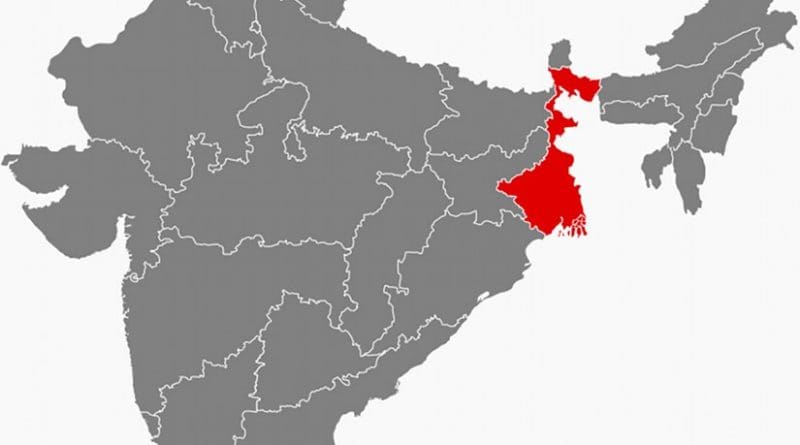West Bengal: Mamata’s Bid For BMW Lacks Auto Infrastructure – OpEd
After the overwhelming victory for the second term in West Bengal assembly election in 2016, Chief Minister Mamata Banerjee made a volta face towards car makers. She vied for the German auto-giant BMW to invest in West Bengal, despite her goodbye to Tata.
But, setting up of a car factory in West Bengal is not propitious, given the lackluster auto-infrastructure in the State. Manufacturing cars is a value–chain based industry. In Japanese terminology, it is known as a supporting base industry. It is a marriage between assembly operations and component manufacturers. It needs development of both assembly operations and component makers side by side. A car assembly plant does not produce components. They are supplied by component makers. Given the severe price completion, manufacturers of critical components are required to set up factories within the close proximity of the assembly plant. Therefore, setting up of a stand alone car assembly plant is not viable, unless component manufactures are developed in the State.
Chakree Chaei ( jobs wanted) has been the growing clamour in West Bengal after Mamata’s second victory. People of Bengal brought Ms Mamata Banerjee back to office, despite her failure to bring a single big investment in the State in her first term. Shutting down the 34 years of Communist government raised big hopes, but, soon those hopes were belied.
Failing to bring back domestic investors, she turned to foreign investors. She vied for the German heart, BMW, to set up a car factory. She visited BMW and tried to allure the company with a big land bank and surplus power, against the lackluster image of land availability in other parts of the country after the Land Bill was stuck in political row.
Will the German auto giant be enticed by her magical offers? The paradox lies with the potential for setting up an auto factory in the State. If BMW sets up a car factory in West Bengal, it needs to develop component and parts makers in West Bengal. But, West Bengal is a blip on the map of auto component making industry. In the near term, it is difficult to develop the auto component industry.
Alternatively, the company has to source component and parts from Tamilnadu and Haryana – the hubs of Indian auto components. Procurement from Tamilnadu and Haryana are less cost effective because of long distant transit costs.
Further, the import of component and parts are not economically viable because of high custom duties and currency fluctuations Against these backdrops, West Bengal can not be the appropriate destination for an automobile giant at the current industrial structure.
Experiences of Suzuki of Japan and Hyundai of South Korea should be important lessons for the State government. Maruti-Suzuki of Japan developed manufacturers of critical component and parts in Haryana near to its plants in Gurgaon and Hyundai Motor of Korea brought 17 subcontractors from Korea in Tamilnadu, near to its plant in Sriperumbudur.
Chief Minister Mamta Banerjee chanted for a large land bank in West Bengal, compared to other states. But, the big investors are dubious over the potential benefit of the land bank. This is because there are few big land tracts available in the land bank. Mostly they are small plots and not contiguous. .According to State government data, there is one lakh acres of land in the land bank. It is difficult to find big areas of contiguous land.
Against the backdrop of the present industrial structure of West Bengal, the industries with low and middle level investment and of labor intensive are appropriate for industrialization. To this end, experiences of Vietnam and Bangladesh would be pertinent for the growth industries in West Bengal. Success stories of ‘Supporting industry” model in Vietnam and upsurge in garment industry in Bangladesh can provide some tips to West Bengal.
Supporting industries are group of manufacturing industries within a country that supply parts and components or process them for the assemblers, such as automobile, electronics and precision equipments. Supporting industry is low cost capital intensive and high labour intensive with high –skilled labour.
In Vietnam, Supporting industry proved boon to the growth of domestic automobile industry. The country has reached 90 percent of localization in manufacturing motorbikes. Vietnam is the second biggest manufacturer of motorbikes in ASEAN. Foreign investors played an important role in the development of supporting industry. This led to flow of foreign investment in Vietnam.
The electronic industry is a Supporting base industry. Manufacturing of mobile phones and electronic components are low capital and high labor intensive industries. There are several factors which favour West Bengal as better destination for mobile phone and electronic component manufacturing. Cheap wage, low land cost, surplus electricity and availability of highly skilled labour forces ( owing to three big technical education institutes) can prove propitious for development of mobile and electronic component manufacturing in West Bengal.
In Bangladesh, the garment industry is a major driving force for industrialization. It is the second biggest exporter of garment in the world after China. It contributes 75 percent of Bangladesh exports.
Garment is labour –intensive and low-capital base industry. It provides start-up platform for re-building of industrialization. Low wage is the catalyzing factor for the growth of garment industry. Automation has limited scope in garment industry. Given the factors which are favourable for the growth of garment industry, West Bengal can be an ideal place for setting up garment industry.
Therefore, to start with, labour intensive and low capital base industries are warranted in West Bengal. To this end, the investors in supporting industry base and garment industry should be incentivized. In the run up, foreign investors can be allured in the development of supporting industries and garment in West Bengal, on the lines of Vietnam and Bangladesh.
*S. Majumder, Adviser, Japan External Trade Organization ( JETRO) , New Delhi, Views are personal

